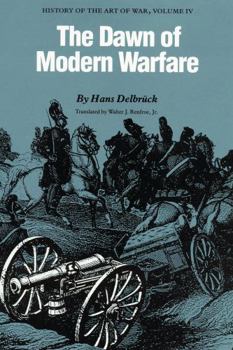The Dawn of Modern Warfare: History of the Art of War
(Book #4 in the History of the Art of War Series)
Select Format
Select Condition 
Book Overview
In this last volume of his classic history of the art of war, Hans Delbr ck considers new developments: the use of gunpowder, the invention of firearms, and the employment of noisy large cannon that shot stone and, later, iron balls. After reviewing the establishment of a European infantry, Delbr ck discusses the transformation of loose confederations of knights into cavalry (well developed by the last Huguenot wars), the organization of fighting mercenaries (followed by wives and prostitutes), and the changing of mercenary bands into standing armies.
The Dawn of Modern Warfare is colored by larger-than-life personalities: Niccolo Machiavelli, the theoretician of the new art of war; Maurice of Orange, renovator of the art of drill and father of military discipline; Gustavus Adolphus of Sweden, perfecter of infantry tactics; Oliver Cromwell of England, reorganizer of a citizen militia into a professional army; and Frederick the Great and Napoleon Bonaparte, military strategists par excellence.






